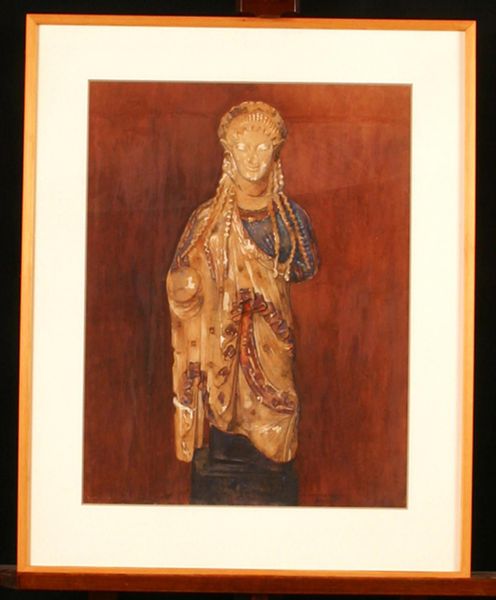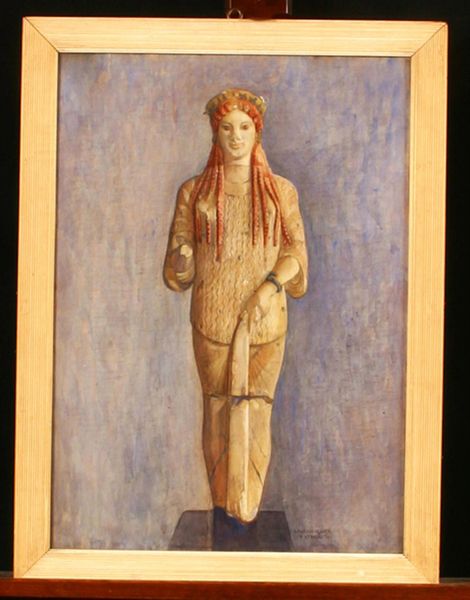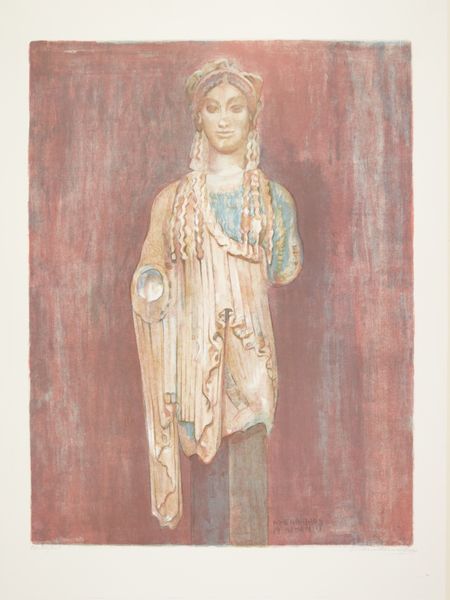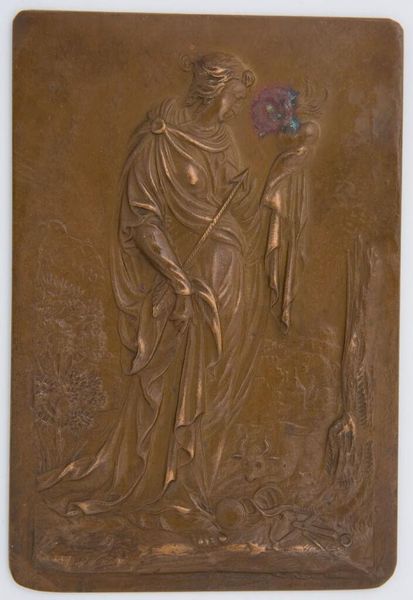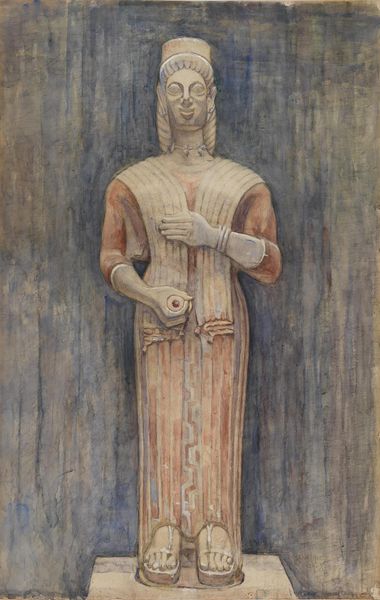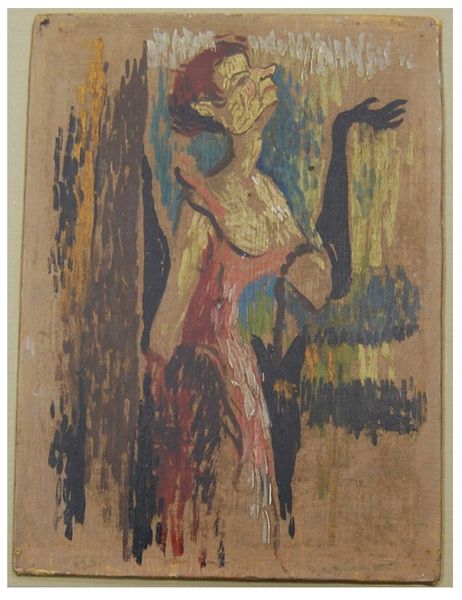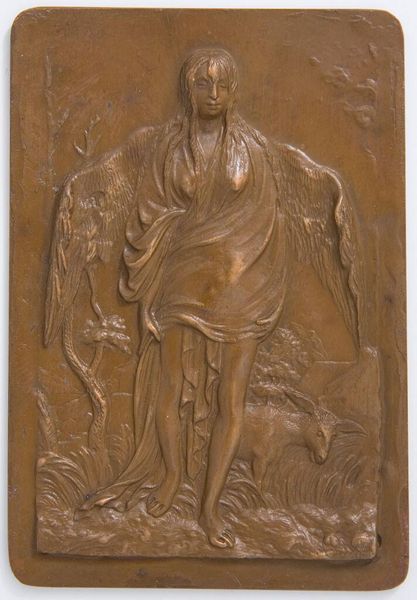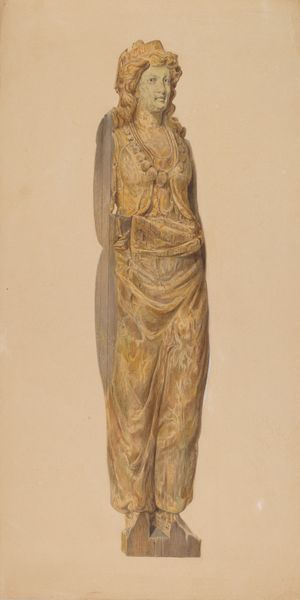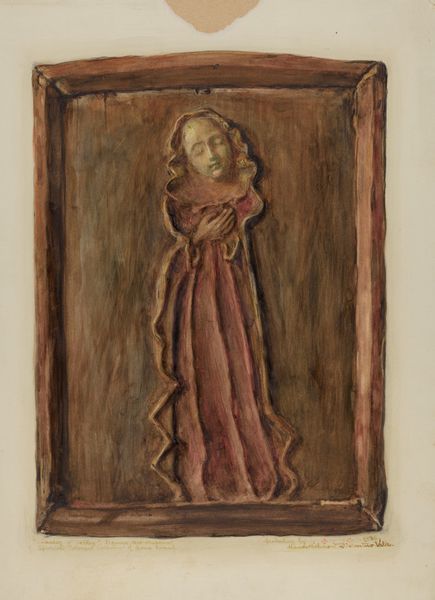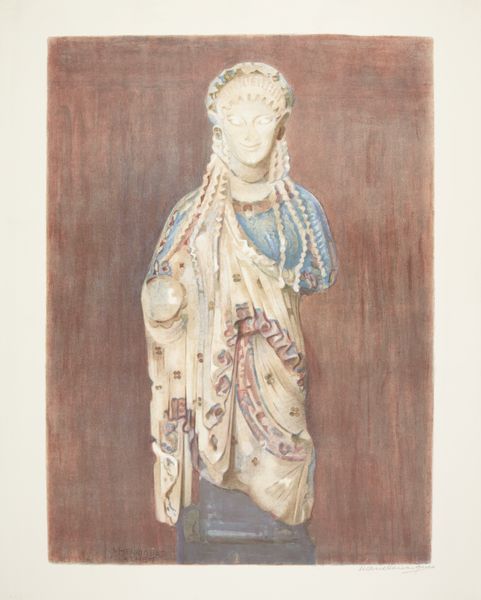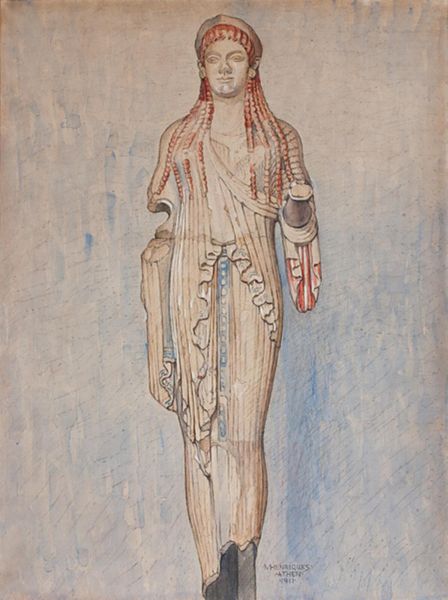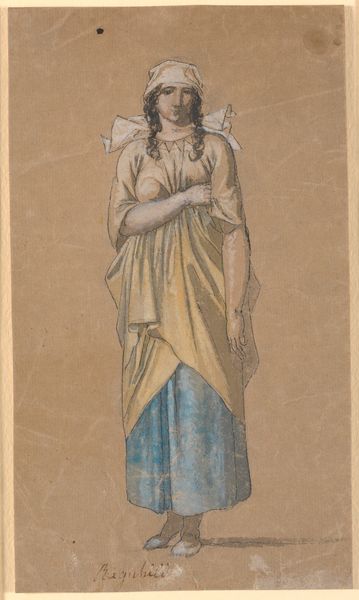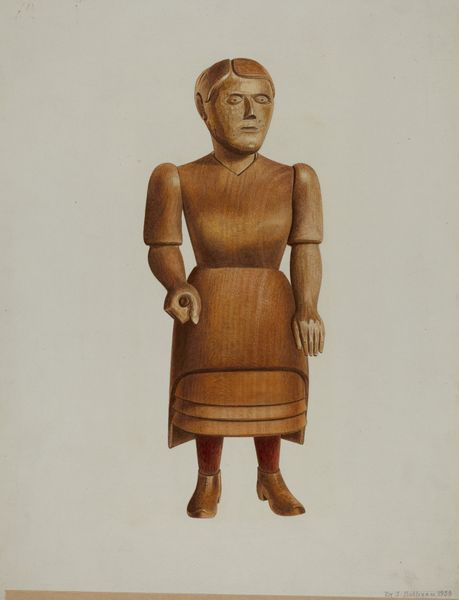
sculpture
#
greek-and-roman-art
#
figuration
#
form
#
ancient-mediterranean
#
sculpture
Dimensions: 640 mm (height) x 490 mm (width) (Bladmål), 723 mm (height) x 570 mm (width) (Bruttomål)
Curator: The initial impression I get is of faded glory, almost as if witnessing the slow unveiling of an artifact long forgotten in an attic. The colour scheme, coupled with the composition, gives it a quiet solemnity. Editor: This is "Kore (Akropolis museet inv. 674)", a 1911 photograph by Marie Henriques currently housed at the SMK - Statens Museum for Kunst. Curator: Henriques managed to encapsulate that profound link between past and present, the way antiquity continues to speak through broken forms and fragmented images. It's not just the subject matter; the grainy texture amplifies a feeling of lost time. Editor: Precisely. This image speaks to the romantic impulse of the period, fascinated by the Classical world. We see how Greek sculptures functioned as potent symbols for the cultural elite in the early 20th century. Consider the context: European societies eagerly absorbed historical fragments to legitimize their identities, strategically interpreting and framing artifacts like this Kore figure to suit their self-image. Curator: The careful positioning of the Kore sculpture set against that somber reddish-brown background highlights the use of light to focus on this enduring emblem of femininity, perhaps representing beauty or fertility from ancient traditions. Editor: I am wondering what choices she made when deciding to take an image of the sculpture; photography as a democratizing force clashed with elite tastes. So, where was this published or shown and to whom? The answers to those questions likely impact what that symbol was supposed to convey. Curator: Yes, exactly, in those circles the figure becomes almost an allegorical representation of idealized memory; this enduring, maternal link that connects modernity with antiquity. Editor: It does suggest a certain timelessness, how an artwork from one epoch is revived through the lens of another, triggering new interpretations and political agendas. The artwork remains a conduit for various narratives. Curator: Yes. And these symbolic interpretations only increase over time! Editor: Indeed. The ability of an image to transcend time and provoke layered dialogues makes me appreciate art history as an iterative process. Curator: Absolutely, I concur, because these works offer reflections across time itself.
Comments
No comments
Be the first to comment and join the conversation on the ultimate creative platform.
